
Written in 2023
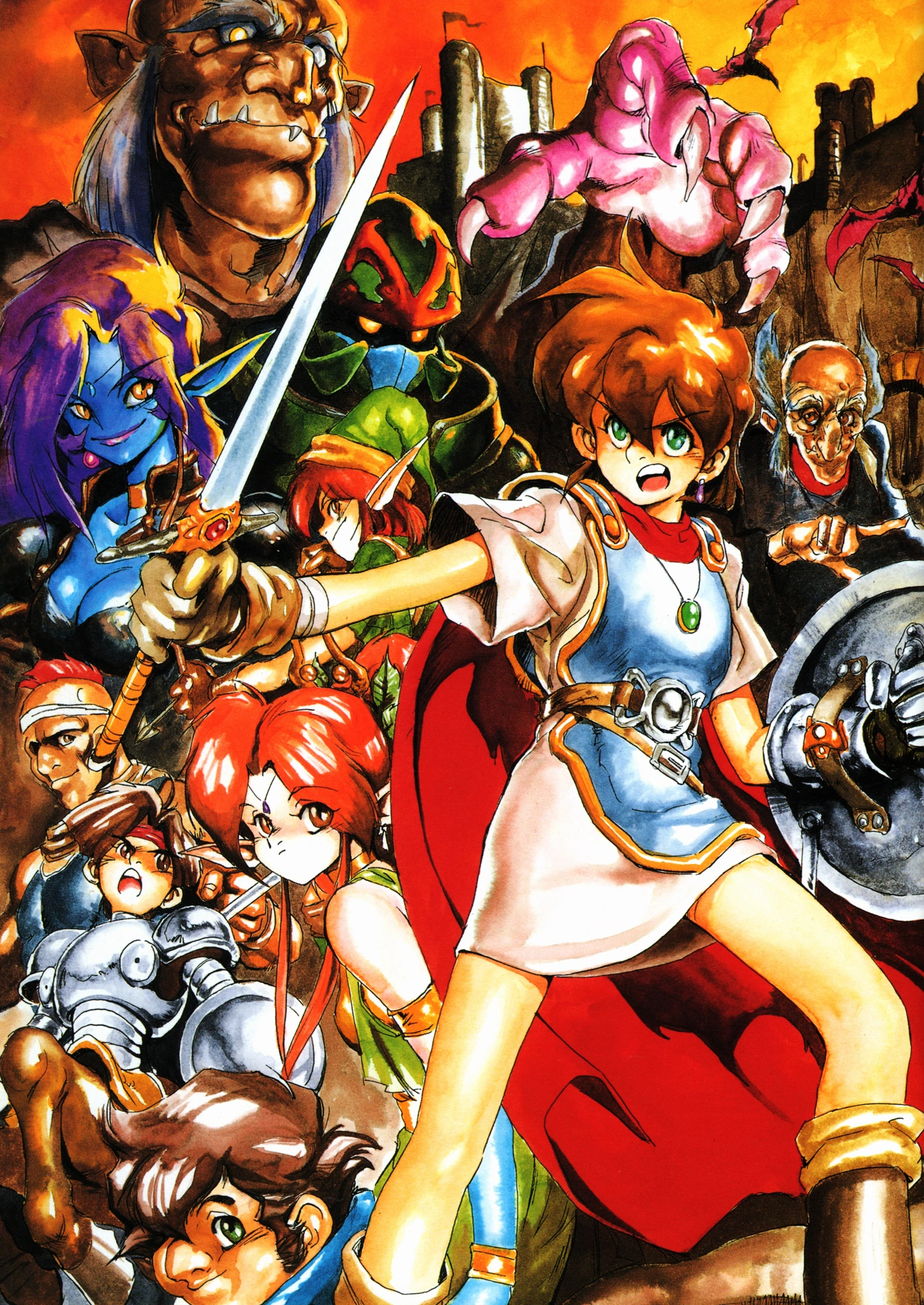 This is a special retrospective - as you can see in the other articles we have in this little corner of rpg-o-mania, usually, the retrospective is about one specific series. And here, we have an article about a company which pretty much covers all of the games this company made.
This is a special retrospective - as you can see in the other articles we have in this little corner of rpg-o-mania, usually, the retrospective is about one specific series. And here, we have an article about a company which pretty much covers all of the games this company made.
There are two series of games here, one is the Shining series, that went on to becomee a row of bland action rpgs (see our Shining Force Exa preview), the other is the Golden Sun series, which consists of two very famous games and a third one that didn't get as much fame.
Ever since the end of Golden Sun, Camelot resorted to creating sports games for Nintendo consoles. However, their RPGs will always be loved. And even if Golden Sun is not a "Shining" game, it has a lot in common with that series.
This retrospective is also a bit different compared to others as I'm trying to add bits and pieces of trivia here and there to all of the games, since I have a very strong emotional connection to this company and these games.
 Shining In The Darkness (1991)
Shining In The Darkness (1991)
This was the first game where people from a studio that would eventually become Camelot Software Planning was involved. This game was created as a team called "Sonic". Shining In The Darkness is a first person dungeon crawler on the Sega Mega Drive which mainly consisted of one dungeon and a town with lots of character interactions in between.
The game introduces some aspects that would later become one of the signature of Camelot games - the store interface, the menus, the "yes and no" selections and more. It's a short game with likeable characters, funny moments, pleasing visuals and a good soundtrack. This is the foundation that many games would build upon.
Trivia: This was the first game not only in the Shining series, but also the first one that uses the iconic four-icon-system that was used in Shining games until "Shining The Holy Ark". Here, you just have to press the menu button and always have four actions available to your disposal that can be selected using the D-pad. Going forth or back works with confirm and cancel buttons. With three buttons, everything can easily be managed.
 Shining Force (1992)
Shining Force (1992)
This is the game that introduced many people to the "Shining" series of games. It was first released on the Mega Drive / Genesis in 1992 and diverged from the path its predecessor walked on: Shining Force is a turn based strategy RPG with a heavy focus on RPG elements. In between the grid-based battles, players could walk around towns and the scenery, talk with people, search and find items and so on. And there's a lot of characters to find, unlock and recruit!
This was an incredibly famous and successful game which saw re-releases all over the place in various compilations and re-releases. There's virtually no Mega Drive / Genesis collection or mini console available where "Force" isn't on it. The game featured vivid colors, great battle animations, a soundtrack reminiscent of its predecessor and even some of the villains from "In The Darkness" reapper here.
Trivia: With over 30 individual characters to collect, Shining Force had one of the biggest RPG rosters in 1992.
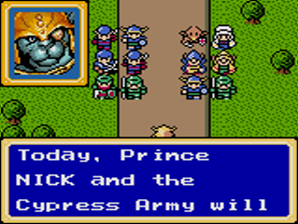 Shining Force Gaiden (1992)
Shining Force Gaiden (1992)
The next game was released on the Sega Game Gear and played some 20 years after the events of the original Shining Force game. It's about a Traveller who is chosen to be the next hero of the Shining Force, a troupe originally created during the events of the first games.
Being on the Game Gear, the game itself was a bit smaller and shorter in scale than its bigger counterpart. Most noticeable, the game lacks the RPG parts, the travelling through towns and other areas.
Trivia: Despite the smaller screens, the Game Gear Shining Force games don't use icons in the menu system but rather abbreviations of the actions.
 Shining Force: The Sword of Haiya (1993)
Shining Force: The Sword of Haiya (1993)
The next game in the series is identical to its predecessor in terms of gameplay. It has the same battle - cutscene - battle momentum to it, and it also again completely lacks towns. So this game, again, feels more like a traditional SRPG instead of a Shining Force game.
Story-wise, the game itself continues the story of "Shining Force Gaiden". This one, incidentally, was released in Japanese and North American markets while "Shining Force Gaiden" was not. Yet, the story of Gaiden should be told soon for international markets, as well as "Haiya", which still wasn't released in Europe.
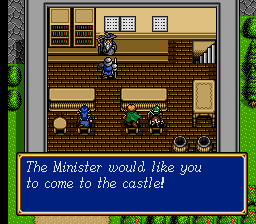 Shining Force II (1993)
Shining Force II (1993)
This was the true successor to Shining Force, released in 1993 in Japan and 1994 in international markets. This game's story is now something completely new, even if the world the game is set in is the same as in the original game.
This time it's about a group of higher demons (or "devils"), who want to resurrect their god. They try to conquer the kingdom that's atop of the valley their god Zeon has been banished to, but fail thanks to a group of young students. Eventually, the whole kingdom is destroyed and thee princess of the kingdom missing. The young students with their leader Bowie have to defeat the devils and their leader, trying to find the princess in the progress.
This game is even more of a RPG than its direct predecessor, with lands that could be traversed at any time, a huge roster of characters to recruit, many towns and villages and lots of different events. Even the story was improved, although it still included a very cliché "save the princess"-part.
Trivia: The movable area in Shining Force is shown by brighting and darkening the area around characters. Shining Force II offers some areas where there is parallax scrolling, but the highlighting doesn't work there. If you're a flying character trying to move around in such an area, you can find out only by trying how far you can go.
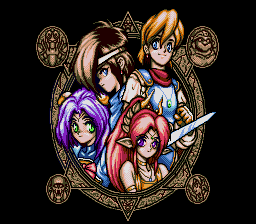 Shining Force CD (1994)
Shining Force CD (1994)
This game, albeit being a Mega CD / Sega CD title, follows the formula of the Game Gear games. There are battles, but no towns inbetween to traverse. The reason for this is that this game is indeed just a compilation of the first two Game Gear games.
Visuals have been improved to match the Mega Drive titles, the soundtrack comes directly from the CD, but there are no other advantages from that improved storage in comparison to the Mega Drive games.
Shining Force CD also includes some bonus events that expand the two Game Gear games.
Trivia: Neither the cover art for Shining Force II nor Shining Force CD in western releases show characters or places actually resembling anything within the game.
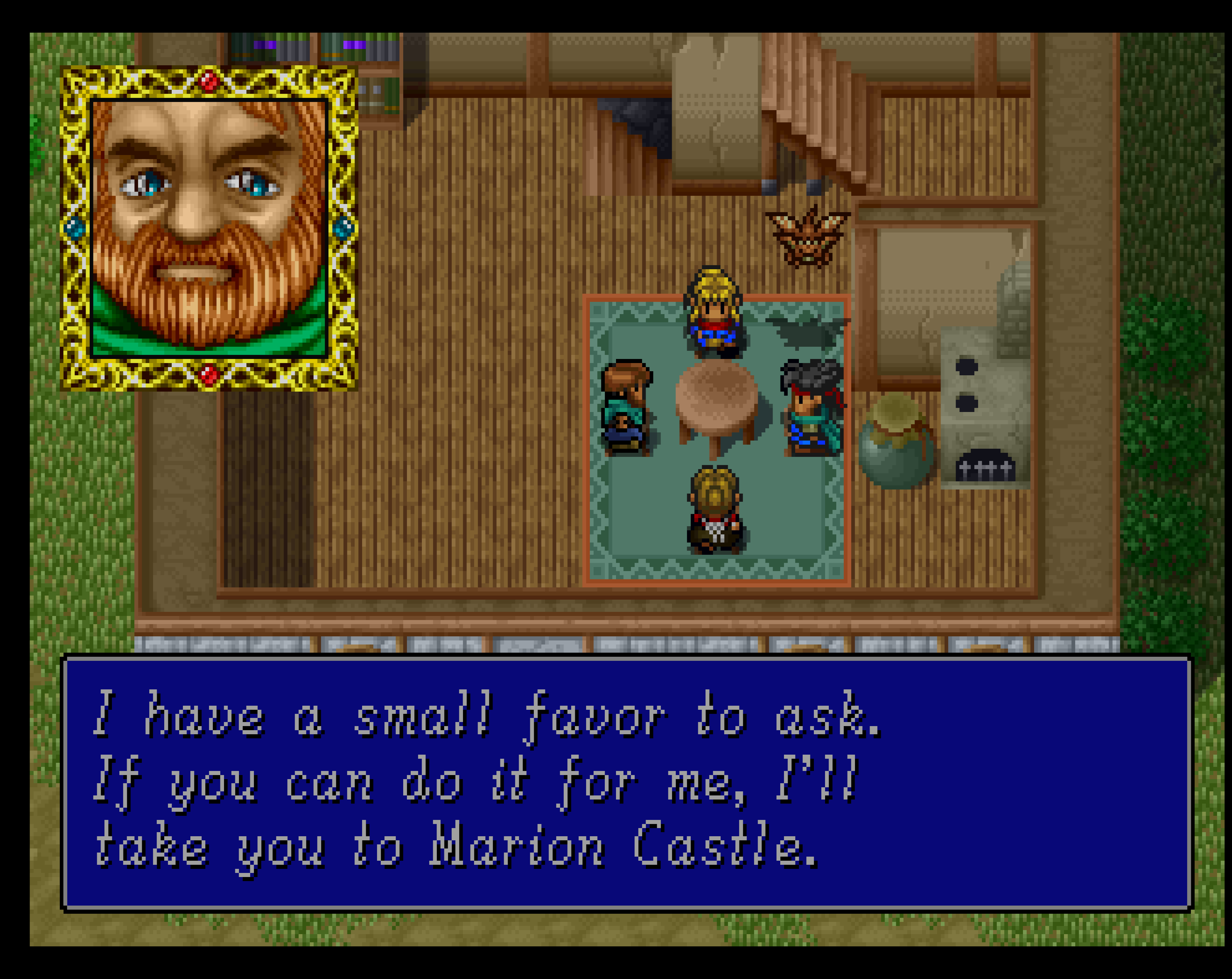 Beyond the Beyond (1995)
Beyond the Beyond (1995)
This is an interesting one. The game was published under the title "Camelot Software Planning" - this should be one of the first times the name was shown. And the game was released on the Sony PlayStation, despite the fact that Camelot originated as a Sega team and had only produced Sega games up until then (and for some more years after this as well)
Beyond the Beyond is the first classic japanese role playing game in the history of Camelot. It's shown in a top-down view, it has turn-based battles, towns, shops and more. The only thing that sets battles apart from other traditional JRPGs is the use of actively timed button presses to increase damage.
Yet, this game so incredibly looks like a Shining game. Spritework could be directly from Shining Force 2, some of the animations and reactions (like shaking heads, shrinking sprites) are almost identical between Shining Force 2 and Beyond the Beyond. The game has the typical Shining-font of that time, and even if the menu is all written in letters, it looks and feels just like a Shining game. And battles already foreshadow Golden Sun in their looks.
The game also introduced music from Motoi Sakuraba, who would stay with Camelot until the modern age.
Trivia: Beyond the Beyond was missing from the first version of this article. It isn't remembered for being great, but as a Shining fan, you can see so much similarities between the old series and this RPG.
 Shining Force Gaiden: Final Conflict (1995)
Shining Force Gaiden: Final Conflict (1995)
This one's interesting. It's the last of the Shining Force games on the Game Gear (and one of the last games to be published on the Game Gear at all), but it's not really connected to the other Gaiden games, nor is it pretty much "Final" in the conflict, as it combines the plots of Shining Force and Shining Force II.
Story-wise, it's pretty interesting. It follows Max, the hero from Shining Force I in an attempt to catch one of the evildoers of that game. During the plot of the game, Max gets lost, and his companions try to find him, reaching the country of Galam, a key player in Shining Force II.
Still, the game itself plays just like the other Game Gear games. No towns here, too.
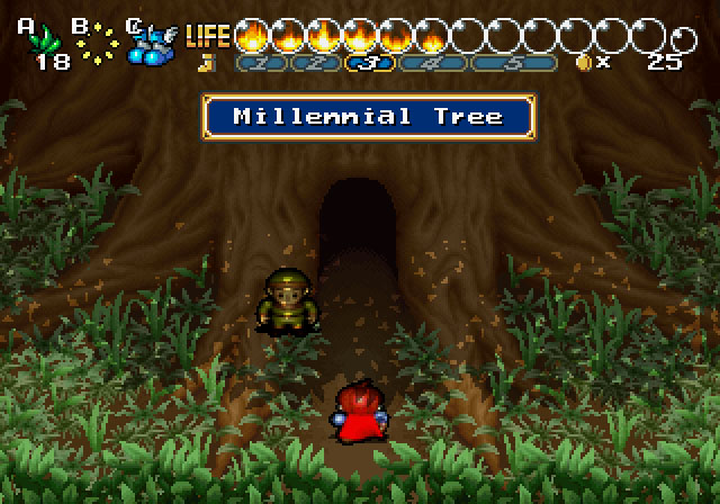 Shining Wisdom (1995)
Shining Wisdom (1995)
This was the first "Shining" game that was not part of the "Force" series since 1991. And it was a departure from the gameplay mechanics introduced both in "Force" and "In The Darkness". This time, the game was an action RPG originally intended to be released on the Sega Mega Drive.
Some of the mechanics are quite unique, as the game requires players to have their character run around a lot. And this is done in several steps, like some sort of gear shift. Other than that, the game itself provides an extensive magic combination system and a huge overworld to explore.
The game was made by the original team, and this was the last time, long-time series composer Motoaki Takenouchi did the score - even if it souned so completely differen than any of his former works. Most of the games' soundtrack consisted of rather upbeat, jazzy tunes. Critical reception was rather mediocre this time.
Trivia: This was the first time that Shin Yamanouchi made the character design for a Camelot game. He would stick with Sonic! / Camelot from here on.
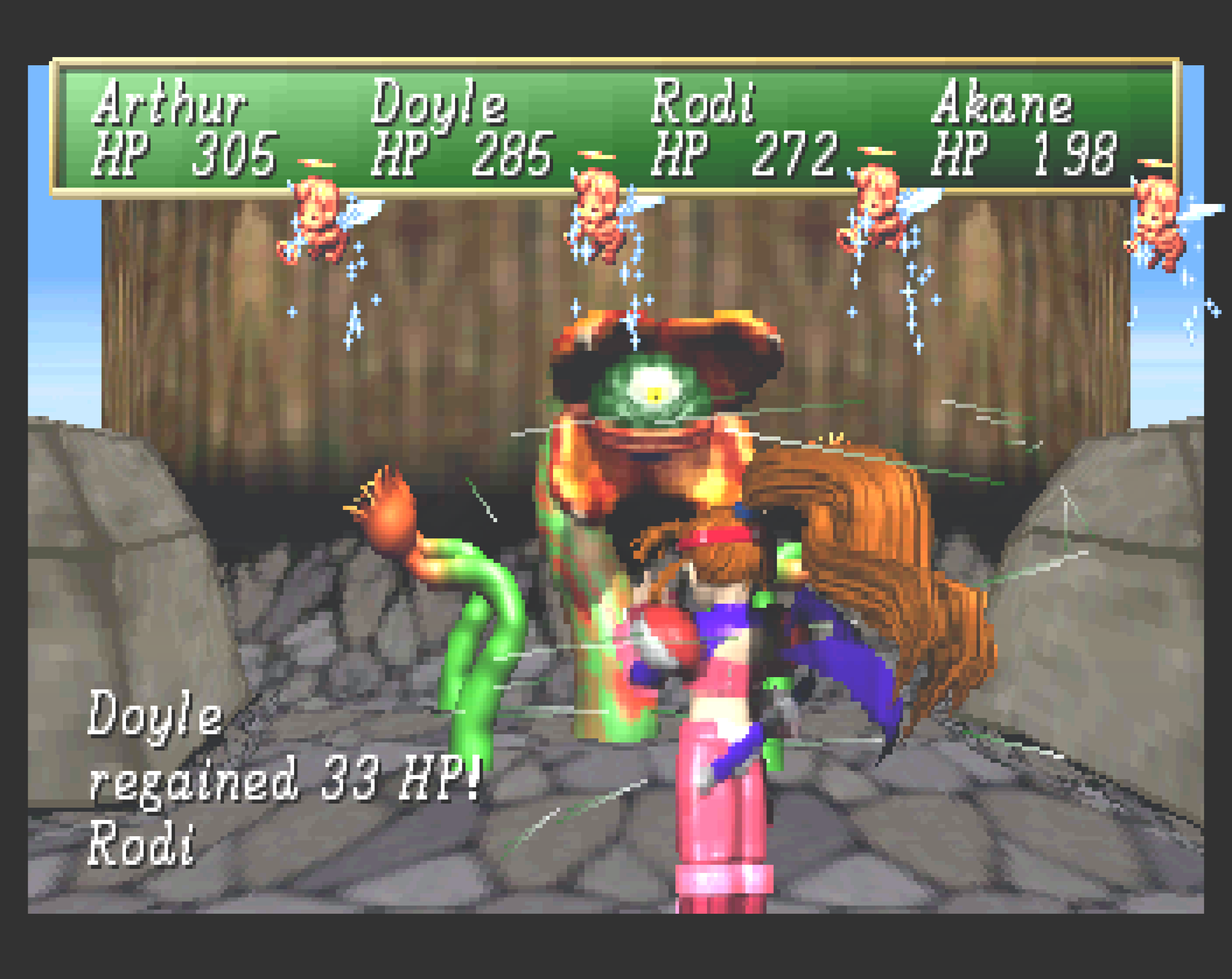 Shining The Holy Ark (1996)
Shining The Holy Ark (1996)
This game is a return to the original formula by being a first persion dungeon crawling RPG. But, it is a dungeon crawling RPG within the "Shining" formula, so a huge focus of this game is set on exploring towns, talking to NPCs and other interesting characters. This also has a heavy focus on characters and character development.
This game follows Arthur, a mercenary, and Rodi, his alleged enemy as they have to work together after being revived by strange looking beings in the aftermath of a collapsed mine. The party consists of a maximum of four members, with reserver members being able to switched between turns. The famous four-icon navigation returns as well. This time, however, the soundtrack had been composed by (then not so) famous Motoi Sakuraba.
The whole tone of the game was darker compared to previous "Shining" games, as the developers wanted to reach out to the playerbase that had grown and matured over the years prior to "Holy Ark's" release. The game itself ditched the whole story of the "devils" as shown by previous games, and introduced the "Vandals", a group of very powerful beings. The game still allegedly plays in the same world as the other "Shining" games, though.
Trivia: The ghost enemies are the same as in Shining Wisdom.
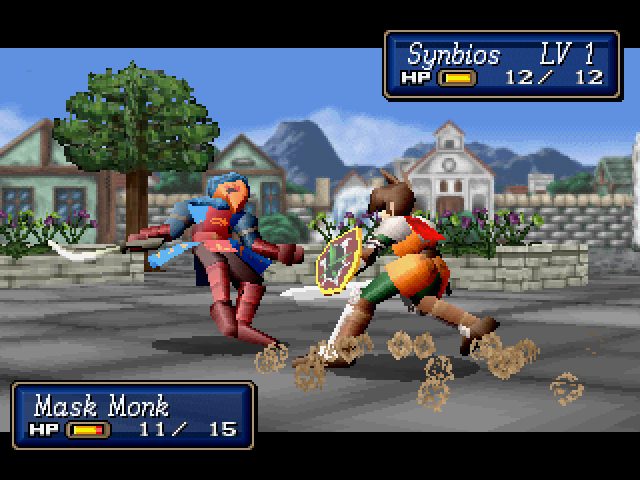 Shining Force III (1997, 1998)
Shining Force III (1997, 1998)
This is it, the Magnum Opus of the Shining Force games. Split into three scenarios, each their own game, with their own protagonist, who is silent in their respective game but talks in others. A massive story covering three parties that ultimately clash into each other, whilst also being entangled in the shenanigans of the Vandals. The story is directly connected to "Holy Ark", where one of the main heroes makes a cameo appearance as a kid.
Visuals have been switched to 3D, where the surroundings are done using polygons, and characters in overworld and towns still being shown as sprites. However, in the battle animations that are a staple of Shining Force, all of the characters are rendered in 3D.
Of the three parts that have been created, only the first one was released in the west, and this part even got altered so that the story concludes with the end of the last battle. Which it didn't. However, pleas or petitions by fans to bring the whole series to the Sega Saturn in the west or later the Dreamcast led to nothing. Shining Force 3 was never officially concluded outside of Japan. However, lots of fans worked together to retranslate all the games and publish thee patches and translations on their own.
This was the last proper Shining Force game done by Camelot (that was still known as "Sonic! Software Planning" back then)
Trivia: These games have the most amount of "endless" battles in the whole franchise.
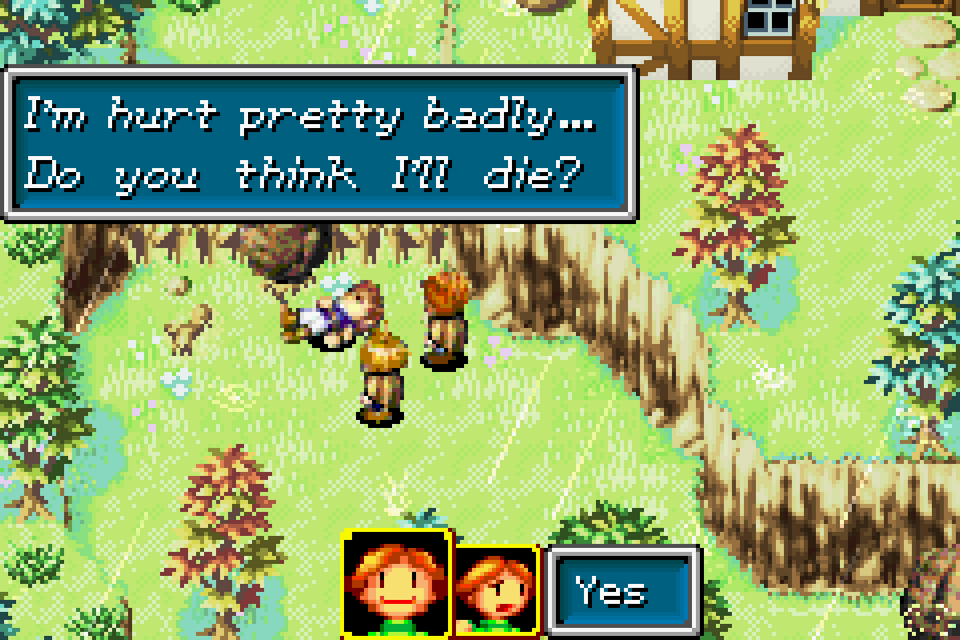 Golden Sun (2001)
Golden Sun (2001)
After all the commotion about Shining Force III, Camelot and Sega split ways and created this whole new game - Golden Sun. It's a turn based RPG before, but this time from a top-down view. And it's been created with the help from Nintendo.
The game follows a group of young people that are able to do some magic power. They are coerced by their teacher to explore some ruins, which unveils events that have been going on ever since their village was struck by disaster some years prior.
The soundtrack was again made by Motoi Sakuraba, and the visuals strongly resemble those of the last "Shining" games. Battles look a lot like Shining The Holy Ark, the overworld design more like Shining Force 3, and the interface is typical Camelot-fashion. Ah yes, and now the company was officially called "Camelot Software Planning".
Trivia: The shop interface is basically the one from Shining Force, including needlessly chatting merchants.
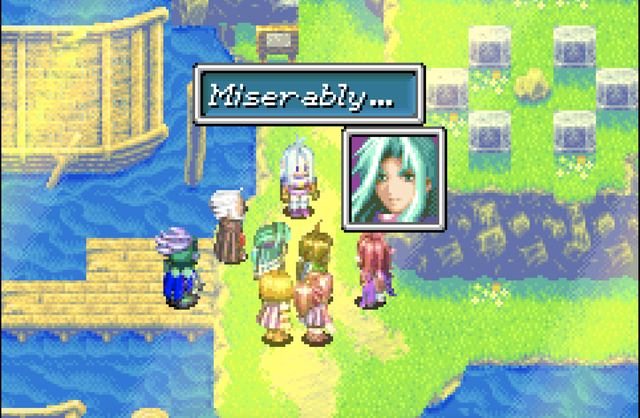 Golden Sun: The lost age (2002)
Golden Sun: The lost age (2002)
Golden Sun II was, more or like Shining Force III, the same story as Golden Sun, but with different protagonists. It was again released on the Gameboy Advance handheld console.
The team was basically the same, and so was the soundtrack done by Mr. Sakuraba again. One thing special about the soundtrack is that how clear it sounds on the console, where usually music there is of pretty low sound quality with lots of scratches and interference.
During these days, Camelot had already made their name as developers of Mario sports games on various Nintendo consoles. Golden Sun was in some sort a love project by the team.
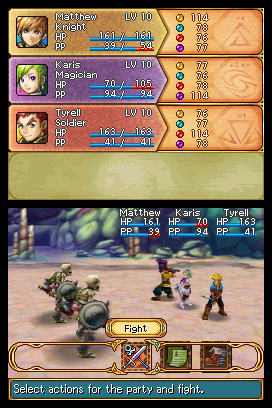 Golden Sun: Dark Dawn (2010)
Golden Sun: Dark Dawn (2010)
This is the last RPG ever created by Camelot. Golden Sun: Dark Dawn plays some years after the events of the original two games, but this time, the game had been developed for the Nintendo DS game console.
The visuals changed to 3D, but the soundtrack was once again composed by Mr. Sakuraba. The game focused more on puzzles this time. Even back in the original two games, puzzles outside of battles and the use of magic there was heavily utilized, but this time, the whole game focus shifted more towards the puzzle elements.
The game was received not as well as its direct predecessors, but was still mostly liked by fans. After waiting eight years for a Golden Sun game, they were just happy that there was still a new one around, and it was overall pretty good on top of that.
Even at their worst, Camelot / Sonic! Software Planning's games were still at least good. The team created some of the most iconic games in the RPG genre that influenced a whole generation of gamers. Almost no one who was a teen in the 90s and had some love for japanese role playing games didn't know about at least one Shining game.
It's a pity that the series ended with one of the greatest strategy RPGs ever made just because there was trouble between the developer and the publsiher. But then again, Sega was already pretty much on a downward spiral back then. Nintendo helped to bring Camelot back on their feet, but eventually led the company to be one that just makes Mario sports games anymore. Which again, is a pity.